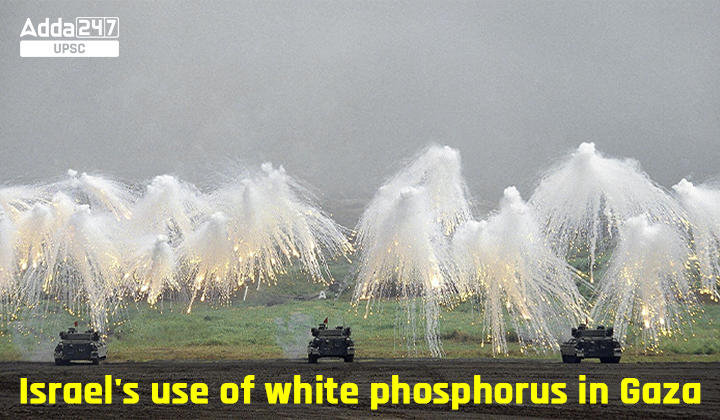Table of Contents
White phosphorus munitions have once again come under scrutiny, with human rights organizations accusing the Israel Defense Forces (IDF) of using these controversial weapons in Gaza and Lebanon. This article explores the key aspects of white phosphorus, including its properties, military applications, health implications, historical use, and the legal framework governing its use in armed conflicts.
White Phosphorus Properties
White phosphorus is a pyrophoric substance that ignites spontaneously when exposed to oxygen. Classified as a “pyrophoric solid, category 1” under the Globally Harmonized System, it emits thick smoke and intense heat, reaching temperatures of 815 degrees Celsius. Its distinct garlic-like odor makes it easily identifiable. It is among the most unstable of pyrophoric substances.
Military Use of White Phosphorus
Smokescreens
White phosphorus is dispersed in artillery shells, bombs, and rockets to create smokescreens, serving as visual obscurants for troop movements on the ground. Additionally, it interferes with infrared optics and weapons tracking systems, providing protection against guided missiles.
Incendiary Weapon
In some cases, white phosphorus is used as an incendiary weapon. Historical examples, such as the second battle of Fallujah in Iraq, underscore its devastating impact on combatants and civilians alike.
Health Implications
Severe Burns
Exposure to white phosphorus can cause severe burns, often penetrating down to the bone. These burns are excruciatingly painful, challenging to heal, and prone to infections.
Respiratory Damage
Inhaling white phosphorus particles or smoke can lead to respiratory damage and harm internal organs. Survivors often experience a lifetime of suffering, with impaired mobility and enduring scars.
Environmental Impact
Beyond human casualties, white phosphorus can devastate infrastructure, damage crops, and kill livestock. Raging fires, particularly in windy conditions, amplify the environmental impact.
Historical Use of White Phosphorus Munitions
Origins
White phosphorus munitions trace back to the late 19th century when Irish nationalists employed a formulation known as “Fenian fire.” Subsequent widespread use occurred during World War I by British and Commonwealth forces in various forms, including grenades, bombs, shells, and rockets.
Global Conflicts
White phosphorus munitions have been a recurring element in conflicts worldwide, from the Normandy invasion in World War II to the U.S. invasion of Iraq in 2004 and the Nagorno-Karabakh conflict. Recent accusations involving Russia’s use in the invasion of Ukraine underscore its persistent presence in modern warfare.
Legal Status of White Phosphorus Munitions
International Humanitarian Law
White phosphorus munitions are not globally banned, but their use is regulated under International Humanitarian Law (IHL). The Convention on Conventional Weapons (CCW) Protocol III specifically addresses incendiary weapons, including those containing white phosphorus.
Protocol III Limitations
While Protocol III prohibits the airdrop of incendiary weapons in concentrations of civilians, there are notable loopholes. Ground-launched incendiary weapons face restrictions, but not a complete ban in civilian concentrations. The protocol’s definition of incendiary weapons poses challenges, as it may not cover multipurpose munitions like those containing white phosphorus.
Conclusion
White phosphorus munitions continue to be a contentious issue in modern warfare, prompting ethical and legal debates. As allegations of their use surface in ongoing conflicts, It is essential for them to assess accurately human and environmental harm. The international community must scrutinize and strengthen legal frameworks to ensure the responsible and accountable use of such weapons, emphasizing the protection of civilians in conflict zones. The debate around white phosphorus encapsulates broader discussions on the evolving nature of warfare, ethical considerations, and the imperative to safeguard human rights in times of armed conflict.


 TSPSC Group 1 Question Paper 2024, Downl...
TSPSC Group 1 Question Paper 2024, Downl...
 TSPSC Group 1 Answer key 2024 Out, Downl...
TSPSC Group 1 Answer key 2024 Out, Downl...
 Cabinet Ministers of India 2024, New Cab...
Cabinet Ministers of India 2024, New Cab...







